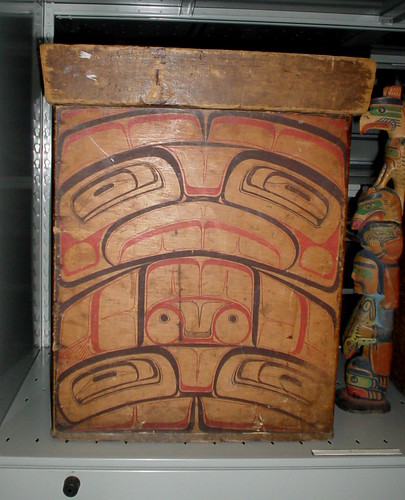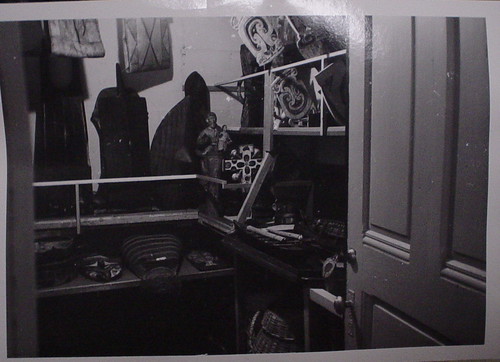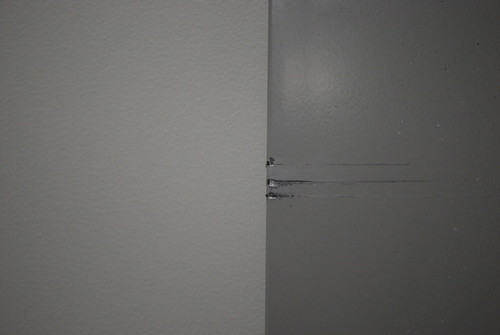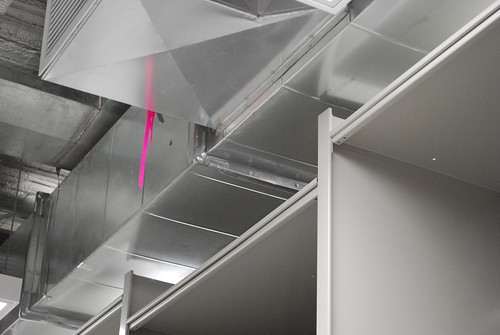There are two
Pacific Northwest bentwood boxes in the collection. The four sides of bentwood boxes are made of a single plank bent into the shape of a box. These boxes are often beautifully decorated with
formline animals and motifs. Boxes were used for cooking in and storage. They were often very highly prized possessions within families. To see more Bentwood boxes, take a look at
this page of bentwood boxes from the collections of our neighbors at the Burke Museum in Seattle.
But this post is titled "Surprises," not "all about bentwood boxes." When we moved the box pictured below, we removed the top of the box. The top is quite heavy, and we didn't want to have the top falling to the ground while we moved the box (I shudder at the thought of dropping collections objects). As we were lifting and moving the box, we noticed an odor... a very distinctive odor... fish! More specifically, smoked fish - salmon I think. It was a surprise to find such a vivid reminder of the past history of the box hiding just out of sight.

As soon as we could, we closed the box up again, hopefully preserving this amazing experience for future individuals. It is now sitting safely on its new shelf here in Dean Hall.
Little surprises like this are part of what I love about working with museum collections. It's very detail oriented work, so sometimes I discover that
the soles of a pair of moccasins were recycled from an earlier use, and sometimes I discover
that a pair of sandals was once infested by many many hungry bugs (which is less delightful). And sometimes I discover something which can't be seen, like the smell of salmon in a bentwood box. It's very cool.







